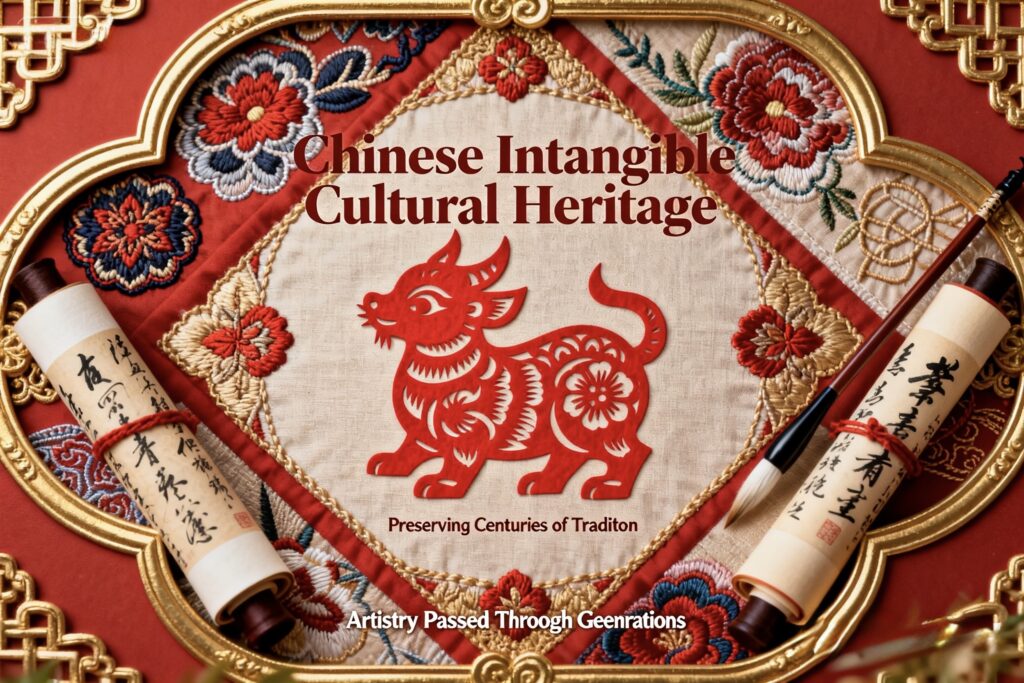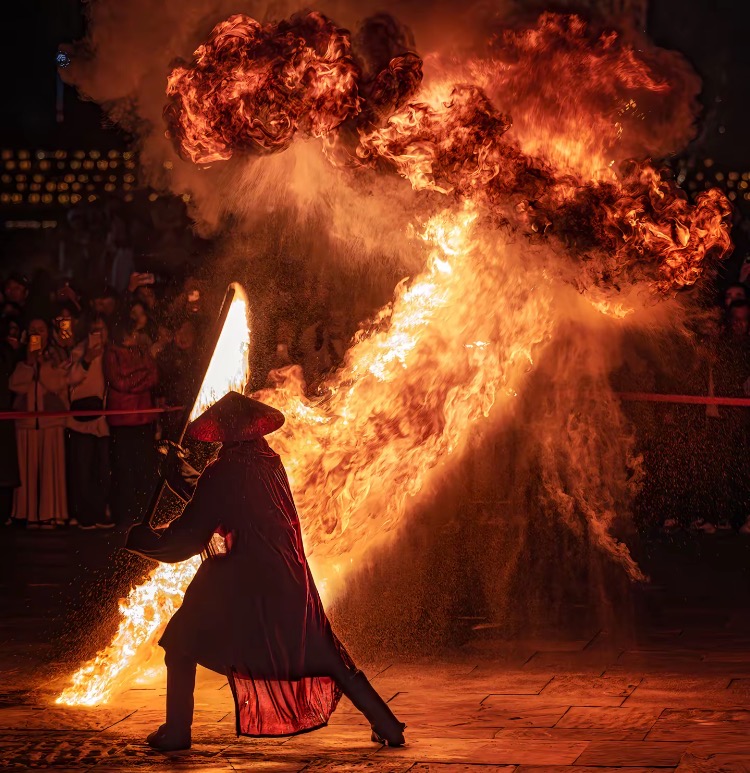
If you’ve ever marveled at a delicate Chinese embroidery, run your fingers over the smooth glaze of blue-and-white porcelain, or listened to the rhythmic chants of Peking Opera, you’ve already touched a piece of China’s Intangible Cultural Heritage (ICH). Unlike ancient relics locked in museums, ICH is a “living legacy”—passed down from generation to generation, breathed into new life by craftspeople, and woven into the fabric of modern life. Today, let’s dive into the stories behind three iconic Chinese ICH forms, and why they matter to the world, not just China.
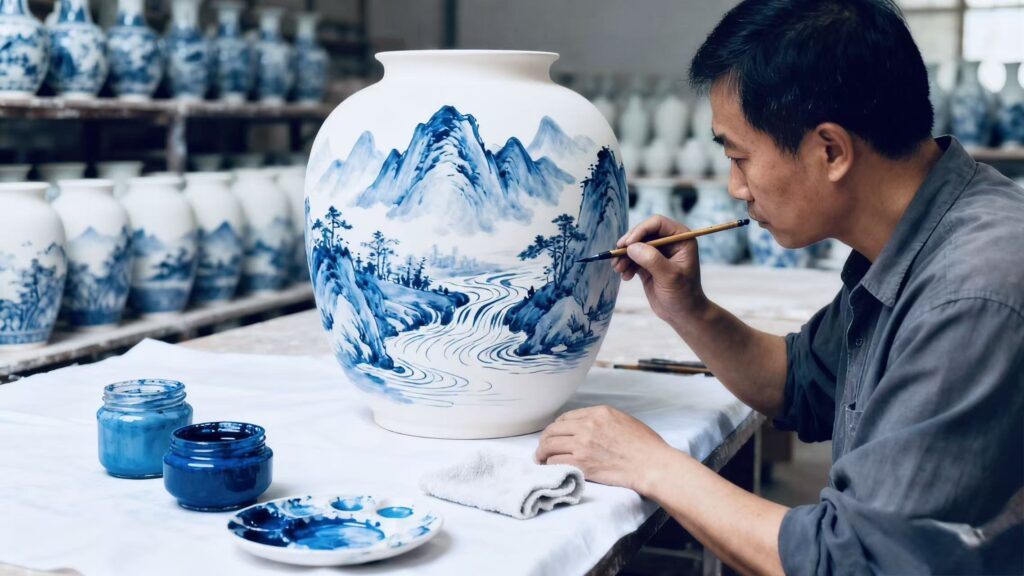
Su Embroidery: Stitches That “Bring Flowers to Life”
If blue-and-white porcelain is “painting with clay,” Su Embroidery (from Suzhou, eastern China) is “painting with thread.” What makes it so special? Its motto: “Each stitch has a meaning, and every thread tells a story.” Unlike ordinary embroidery that uses thick threads for bold patterns, Su Embroidery uses threads as thin as a hair—sometimes splitting a single silk thread into 48 smaller strands—to create details so fine, you’d think they’re painted.Take the classic “cat embroidery” for example: to make the cat’s fur look soft and real, the embroiderer uses “gradient stitching”—blending 5 or 6 shades of gray thread, one tiny stitch at a time. For the cat’s eyes, they use a special “twisted thread” technique, so the eyes shine like they’re looking right at you. It’s said that a master embroiderer takes 3 months to finish a small cat panel—over 10,000 stitches, no two the same.The story of Su Embroidery goes back 2,000 years, to the Han Dynasty. Back then, it was used to decorate royal robes; later, it traveled along the Silk Road to Europe, where nobles fell in love with its elegance. But by the 1980s, Su Embroidery almost disappeared—young people didn’t want to spend years learning a craft that took so long to master.Then, a group of young embroiderers decided to change that. They started making Su Embroidery for modern life: delicate embroidery on linen scarves, small floral patches for denim jackets, even custom portraits stitched with thread. One embroiderer, Li Na, told me: “Su Embroidery isn’t just about flowers and cats. It’s about using thread to capture the beauty of life—whether it’s a sunset over a lake, or a child’s smile. That’s why it should be worn, not just hung on a wall.” Today, her Su Embroidery scarves are sold in independent shops around the world—each stitch carrying 2,000 years of history, but fitting right into a modern wardrobe.
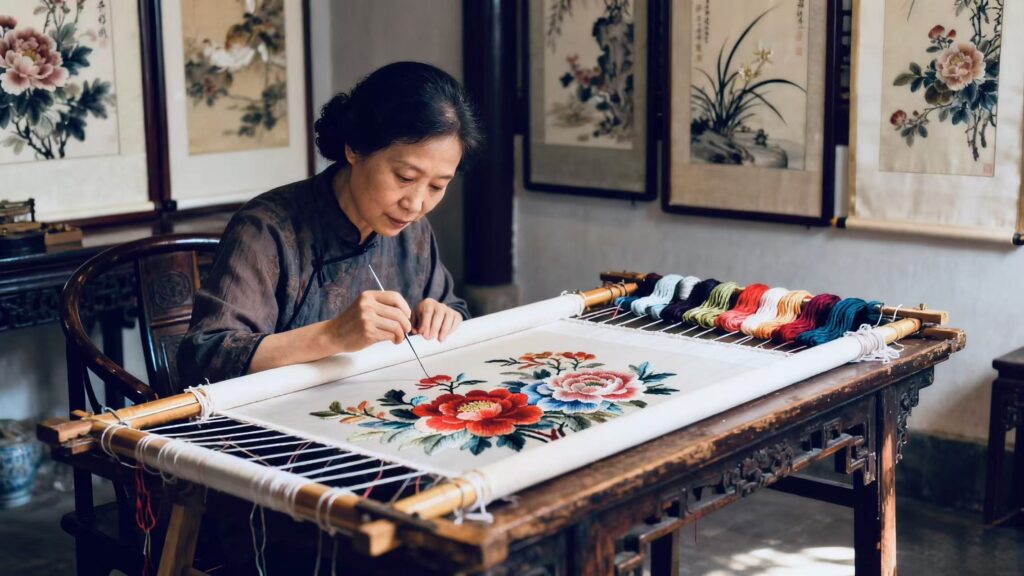
Paper-Cutting: A Folk Art That Turns Paper Into “Magic”
Of all China’s ICH, paper-cutting is probably the most accessible—and the most heartfelt. It’s simple in materials: just a sheet of red paper and a pair of small scissors. But in the hands of a craftsperson, that paper becomes everything: flowers, birds, fish, even scenes of family gatherings (like a wedding or Lunar New Year feast).The story of Chinese paper-cutting dates back to the Northern and Southern Dynasties (over 1,500 years ago). Back then, people used scissors to cut patterns into silk or leather for decoration; later, paper became cheaper, so it spread to ordinary families. Red was the favorite color—because in Chinese culture, red symbolizes joy, luck, and warding off bad fortune. During Lunar New Year, every family would put paper-cuttings on their windows: a “fish” for prosperity (the Chinese word for “fish” sounds like “surplus”), a “peony” for happiness, or a “couple of cranes” for long life.What makes Chinese paper-cutting unique is its “no-glue, no-stitch” rule—all patterns are cut from a single sheet of paper, with every part connected. For example, a paper-cut of a “lucky knot” has dozens of loops, but if you pull one thread, the whole thing falls apart. It’s like life: all parts are connected, and every small detail matters.Today, paper-cutting is getting a modern upgrade. Young artists are using colored paper instead of just red, cutting patterns of superheroes or city skylines, and even making 3D paper-cuttings that stand up. In a small village in Shaanxi Province, Grandma Wang—an 82-year-old paper-cutting master—teaches kids how to cut simple patterns every weekend. “I don’t want this craft to die,” she says. “When the kids cut paper, they’re not just making art—they’re learning about our family’s stories, and our country’s stories.”
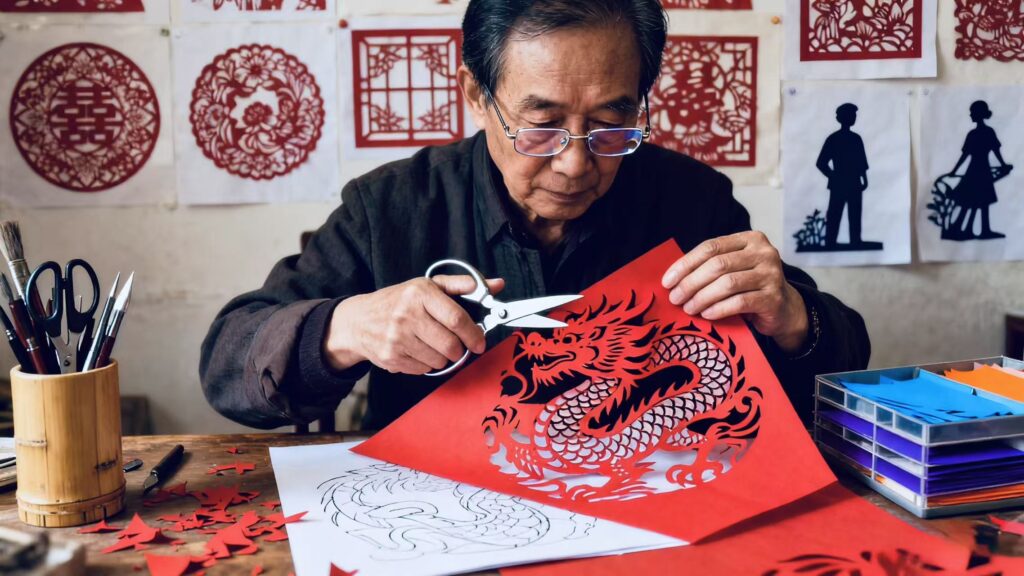
Why China’s ICH Matters to You (Even If You’re Not Chinese)
You might be thinking: “These are beautiful stories, but how do they relate to me?” Here’s the thing: ICH isn’t just about “Chinese culture”—it’s about human creativity. Every piece of blue-and-white porcelain, every Su Embroidery stitch, every paper-cut is a craftsperson saying: “I care about beauty. I care about passing down what’s important.”In a world where so many things are mass-produced—where you can buy a mug for $2, or a scarf for $5—ICH is a reminder of “slow, intentional beauty.” It’s a mug that took 3 days to make, not 3 minutes. A scarf that has 10,000 stitches, not a printed pattern. A paper-cut that was made by hand, not a machine.And when you buy a piece of ICH (like the Su Embroidery tote we talked about earlier, or a small paper-cut decoration), you’re not just buying a product—you’re supporting a craftsperson’s life, and helping a 1,000-year-old story keep going. You’re saying: “Your work matters. Your culture matters.”Final Thought: ICH Is a Story Waiting to Be SharedChina’s ICH isn’t locked in the past. It’s alive—in the hands of Grandma Wang cutting paper, in Li Na stitching scarves, in the Jingdezhen potter watching the kiln. These stories aren’t just “Chinese stories”—they’re human stories, about passion, patience, and passing down what we love.Next time you see a piece of Chinese ICH, take a moment to look closer. Behind that blue-and-white pattern, that embroidery stitch, that paper-cut—there’s a story. And that story is waiting to be shared.Have you ever owned a piece of Chinese ICH? Or is there a traditional craft from your culture that you love? Let us know in the comments—we’d love to hear your story too!
